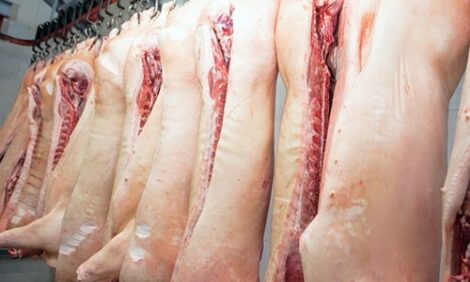



Weekly Overview: Russia, China and Agricultural Trade
GLOBAL - European Union farmers are this week discussing how to overcome the ramifications of the ban on the import of their products by Russia, while losses from African Swine Fever are estimated to have cost Russian pig farmers the equivalent of US$25 million already. Meanwhile, China's growing demand for meat offers trade opportunities for pig meat producers from the US and elsewhere. The question is, will China import pig meat, for example, or the feed ingredients to supply its own pig farmers?Europe's farmers are preparing to face difficult times in the wake of Russia's ban on the import of agricultural products from the EU - including pig meat.
European farming union, Copa-Cogeca, has suggested advanced delivery of direct payments, establishing alternative markets for produce and speeding up promotion campaigns to stimulate extra demand as part of a range of ‘extraordinary measures’, should the market warrant it.
Predicting EU Commission action on fruit and vegetable prices to be inadequate, Copa-Cogeca said prices had begun ‘spiralling out of control’.
This is according to Secretary-General Pekka Pesonen, who outlined Russia’s 10 per cent share of the EU market as being worth €11 billion annually.
Mr Pesonen said: “The ban is hitting many countries across Europe hard. Farmers and agri-cooperatives are already confronted by serious challenges like poor weather and this is the last thing they need. The dispute is not our fault yet its our sector that is being hit the most.”
Farmers' groups from across Europe will gather in Brussels later this to discuss the impacts of the ban and to formulate further action.
In Russia itself, there has been a new report of African swine fever in a wild boar near Smolensk.
Reporting on a recent visit to Russia, Jim Long of Genesus noted: "African Swine Fever can be devastating. We met people who had several thousand pigs affected and had to have them destroyed. They calculate a US$25 million loss. A real risk in pig production Russia, there is insurance to be bought but expensive and varied collection results. African Swine Fever is a real damper on pig production investment in Russia."
Also on the BRIC countries - Brazil, Russia, India and China - recent government policy changes in China have the potential to boost US agriculture, particularly the corn and livestock sectors, according to Iowa State University economics and finance professor, Dermot Hayes.
Speaking at Kansas State University’s 2014 Risk and Profit Conference, Professor Hayes said that there is some uncertainty about China's agriculture and its impact on the rest of the world.
However, he said, if China frees its people and urbanisation moves forward, it will need as much as 140 million tons – more than five billion bushels – of corn, which is bigger than the impact ethanol has made on the market.
If China moves to a more free market for its livestock markets, a large proportion of its future needs will be imported, he said.
“The impact of livestock product imports on world markets will not be as severe as the alternative policy of importing grain. Chinese livestock have poor feed conversion efficiency because Chinese consumers have complimentary preferences to consumers in the West,” Professor Hayes added, noting that the Chinese prefer parts of the animal that US consumers do not.








